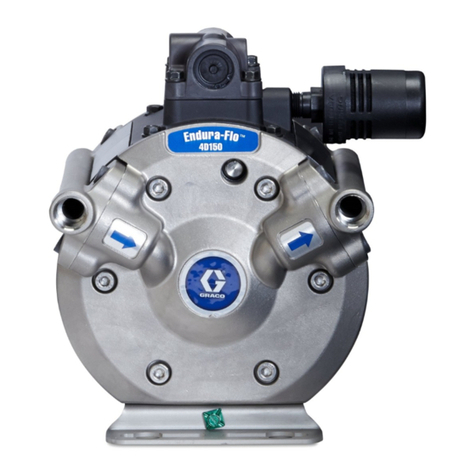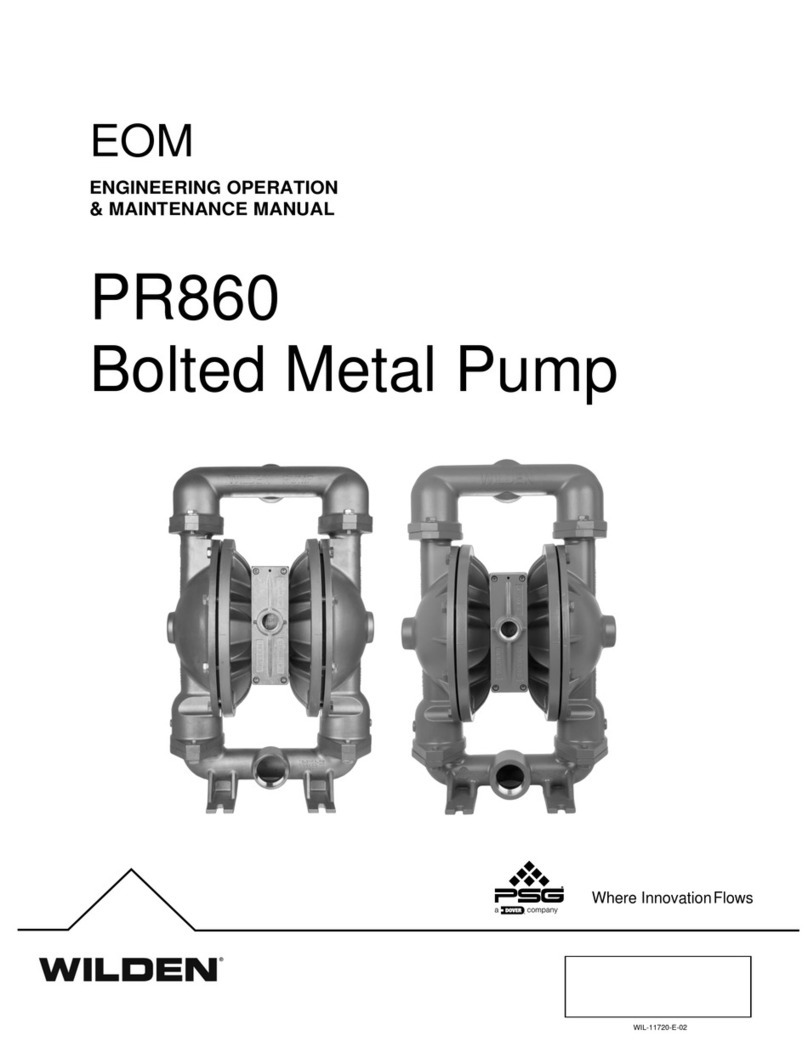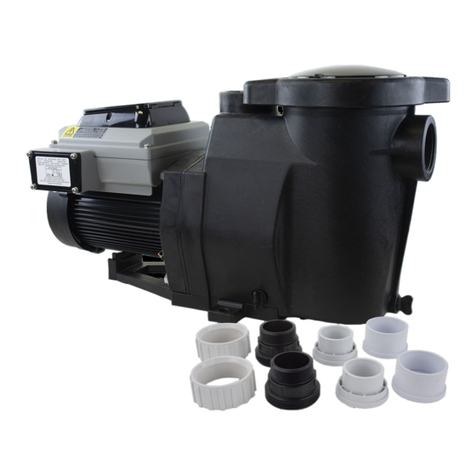Graham 1 Series Instruction manual

IOM-LRP1,2_0402
Liquid Ring Pump
Series 1 and 2 Design
INSTALLATION, OPERATION & MAINTENANCE MANUAL
Graham Corporation ●20 Florence Avenue ●Batavia, New York 14020
Phone: 585-343-2216 ●Fax: 585-343-1097

Graham Corporation
2
Table of Contents
Section 1 - General Information...........................................................................3
1.1 Introduction.......................................................................................................................3
1.2 General Description and Principle of Operation ...........................................................4
1.3 Description of Pump Model Codes ..................................................................................5
Section 2 - Installation Instructions .....................................................................6
2.1 Handling.............................................................................................................................6
2.2 Preservation.......................................................................................................................6
2.3 Mounting............................................................................................................................ 6
2.4 Installation .........................................................................................................................6
2.5 Coupling Alignment..........................................................................................................7
2.6 Belt Drives..........................................................................................................................8
2.7 Service Liquid Piping Arrangements..............................................................................8
2.8 Shaft Seal Coolant Piping Arrangement.......................................................................11
2.9 Piping Requirements....................................................................................................... 14
2.10 Electrical Requirements ...............................................................................................14
Section 3 - Operating Instructions .....................................................................15
3.1 Start-up Procedures........................................................................................................15
3.2 Pump Packing Adjustment ............................................................................................15
3.3 Service Liquid Requirements.........................................................................................16
3.4 Cavitation.........................................................................................................................17
3.5 Shut-Down Procedures ...................................................................................................17
Section 4 - Accessory Items .................................................................................18
4.1 Accessories .......................................................................................................................18
Section 5 - Maintenance ......................................................................................20
5.1 Performance ....................................................................................................................20
5.2 Series 1 and 2 Pump Estimated Weights ( lbs.)*.......................................................... 20
5.3 Shaft Bearings .................................................................................................................21
5.4 Gland Packings................................................................................................................21
5.5 Mechanical Seals .............................................................................................................22
5.6 Storage..............................................................................................................................22
5.7 Removal from storage.....................................................................................................23
5.8 Troubleshooting Chart ................................................................................................... 24
Section 6 - Disassembly And Reassembly Procedures .....................................25
6.1 General.............................................................................................................................25
6.2 Impeller End Clearances ................................................................................................25
6.3 Tie Rod Torque Values................................................................................................... 27
6.4 Bearing Data....................................................................................................................27
Section 7 - Warranty............................................................................................28
Appendix A- MATERIAL SAFETY DATA SHEET .......................................29
Appendix B- RETURN MATERIAL AUTHORIZATION FORM................33

Graham Corporation
3
Section 1 - General Information
1.1 Introduction
This manual will provide assistance in the installation, operation, and maintenance of your
Graham Liquid Ring Pump. Please read this manual completely prior to operating your Liquid
Ring Pump. If you need to contact the Pump Service department for assistance, please have
available the pump serial number, model number, and ID number if possible. The ID number is
stamped on the edge of the discharge flange. The Pump Service department may be reached by
contacting Graham Corporation in Batavia, NY by phone (585) 343-2216, Fax (585) 343-1097,
or e-mail at equipment@graham-mfg.com.
Graham has an extensive stock of spare parts and replacement pumps. Stocked parts and pumps
can be shipped from our warehouse in Batavia, NY by a carrier of your choice.
For your convenience, use our toll free number ( 1-800-828-8150 ) only when ordering spare
parts and replacement pumps. Please have the model number, serial number and part number of
the items required when placing an order. Normal business hours are 8:00 a.m. to 5:00 p.m.
(E.S.T.), Monday through Friday.
Factory rebuilding service is available for pumps returned to Batavia. When a pump is returned
to the factory for repairs, please drain and flush the pump and include a Material Safety Data
Sheet (MSDS) (see Appendix A) for the process in which the pump was used. A Return
Material Authorization (RMA) Number (see Appendix B), issued by Graham, is required
before returning a pump. A sample form is included at the back of this manual to show what
type of information is required to obtain an RMA Number. Field Service Technicians are also
available for travel to the jobsite for troubleshooting and repair or rebuilding of pumps.
This document and the information contained herein are the property of Graham Corporation
and must not be copied, in whole or in part, nor used for manufacture or otherwise disclosed
without the prior written consent of the company. Information contained herein may, from time
to time, be revised and/or updated. Copyright Graham Corporation 1999

Graham Corporation
4
1.2 General Description and Principle of Operation
Graham Vacuum Pumps and Compressors are of the liquid ring type. Single and two stage
pumps are available in a wide range of sizes and materials. These options are listed in the
Graham Sales Bulletins. The major component of the Graham pump is a multi-bladed rotating
assembly positioned eccentrically in a cylindrical casing. (See Figure 1) This assembly is
driven by an external source, normally an electric motor. Service liquid (usually water) is
introduced into the pump. As the impeller rotates, centrifugal force creates a liquid ring which
is concentric to the casing. At the inlet, the area between the impeller blades (buckets) increase
in size, drawing gas in. As the impeller continues to rotate toward the discharge, the impeller
bucket area decreases in size, compressing the gas. This gas, along with the liquid from the
pump, is discharged through the outlet nozzle. The service liquid is separated from the gas and
cooled for reuse in the pump or sent to a drain. In addition to being the compressing medium,
the liquid ring performs two other important functions:
1) It absorbs the heat generated by compression, friction, and condensation of
the incoming vapor.
2) It absorbs and washes out any process contaminants entrained in the gas.
A continuous supply of service liquid is necessary to limit the temperature rise in the pump
caused by the heat of compression, friction, and condensation. Any excessive rise in
temperature will have a detrimental effect on performance, reducing the capacity and degree of
vacuum attainable. Installation schematics for the supply of the service liquid and for the
separation of the gas and liquid discharged from the pump are shown in Section 2.
Gas
Inlet
Gas and
Li
q
uid Outlet
Shaft
Suction Port
Impeller
Gas
Dischar
g
e Port
Li
q
uid Rin
g
Rotation
Figure 1

Graham Corporation
5
Service liquid quantities are a function of the particular model and the intended application.
Check the data sheet for your specific pump model or see Table 1 of Section 3 which lists
typical service liquid requirements.
The normal operating ranges of Liquid Ring Pumps when using water at 59ºF
(15 ºC) for the service liquid are:
Single Stage Pumps down to 150 mmHgA
Two Stage Pumps down to 25 mmHgA
Two Stage Pumps w/Air Ejector down to 3 mmHgA
Single Stage Compressors 20 psi (1.4 bar) max. differential
Two Stage Compressors 30 psi (2.1 bar) max. differential
The standard materials of construction are suitable for handling air and other non-corrosive
gases, while using water as the service liquid. Other materials can be supplied for special
applications.
1.3 Description of Pump Model Codes
Each pump is designated by a model code which describes the materials of construction, size,
type of shaft seals, and any special features. An example of a typical pump is shown below.
Contact Graham for a complete listing of the codes used to describe the pump.
Number of Stages
Frame Size
Pump Series
Impeller Size
Shaft Seal Code
Special Features
2 PV 42120 / 12 / 43 / I / D
Pump
Material
Code
Vacuum Pump = PV
Compressor = PC
Connection
and Shaft
End Type

Graham Corporation
6
Section 2 - Installation Instructions
2.1 Handling
Carefully unpack the pump. Bare pumps may be lifted with a sling placed around the bearing
housings or under the flanges.
Lift pump-motor assemblies by the baseplate only. Do not attach slings nor hooks to the motor
or the pump as this can cause misalignment. Do not attempt to run the pump until the
installation work is complete.
CAUTION: DO NOT RUN THE PUMP WITHOUT SERVICE LIQUID AND SHAFT
SEAL FLUID.
2.2 Preservation
Cast Iron and Steel pumps are protected internally with a preservative solution applied at the
factory before shipping. The solution should be flushed from the pump prior to use. An MSDS
form is included in the back of this manual (see Appendix A).
The preservative solution is petroleum based and must be disposed of
in accordance with all Local, State, and Federal regulations.
2.3 Mounting
Before operation, the pump package should be carefully set, leveled, and securely bolted in
place. It is recommended that shims and grout be used as necessary under all structural
members of the base.
Graham size 30000 through 50000 vacuum pump assemblies are available with an adapter for
mounting a “C-Face” motor. The pump and support bracket should be bolted to the floor, a
cement pad, or an existing framework.
Baseplates supplied with a pump and drive motor mounted at the factory should be leveled,
shimmed as required, and firmly anchored.
2.4 Installation
All piping to the pump should be adequately supported to eliminate any stress at the pump
connections. All piping joints should be tested for leaks prior to start-up. A temporary start-up
strainer in the process inlet piping may be used to keep large contaminates from entering the
pump at start-up.

Graham Corporation
7
Install the piping for the shaft seal coolant as required. Refer to section 2.8 regarding the shaft
seal coolant piping requirements.
The location of the installation or the storage of the pump should be in an area that will
not subject the pump to freezing.
Verify the pump’s rotation direction by checking the arrow on the shaft end casing. Refer to
section 2.10 concerning the electrical requirements.
2.5 Coupling Alignment
CAUTION: TO PREVENT PERSONAL INJURY, DO NOT OPERATE THE PUMP
WITHOUT PROPERLY GUARDING THE DRIVE COUPLING(S).
Pumps supplied from the factory packaged with a motor have had the shafts aligned prior to
shipment. This ensures that alignment can be done in the field. It is required that the shaft
alignment be rechecked after mounting on a level foundation and prior to start-up.
When a gear reducer is supplied between the pump and motor, they are aligned at the factory
and must be realigned after installation. The gear reducer should be aligned to the pump first
and then the motor should be aligned to the gear reducer.
For smoother operation and longer life of the coupled equipment, the following maximum
misalignment tolerances are recommended:
The maximum allowable parallel shaft misalignment for standard couplings is
±0.002"(0.05 mm) and for spacer couplings is ±0.001"per inch (0.025 per mm) of
spacer length.
The maximum allowable angular shaft misalignment is ±0.0005"per inch
(0.013 per mm) of coupling diameter.
±0.002"or
±0.001"x L
L
D
±0.0005"x D

Graham Corporation
8
2.6 Belt Drives
CAUTION:
TO PREVENT PERSONAL INJURY, DO NOT OPERATE THE
PUMP WITHOUT PROPERLY GUARDING THE DRIVE BELTS.
When pumps are supplied with belt drives, follow the belt manufacturer’s instructions to set the
tension.
2.7 Service Liquid Piping Arrangements
The operating principle of a liquid ring pump depends on a continuous supply of clean service
liquid, which is normally water. The liquid enters the pump through a connection on the casing
and is discharged from the pump along with the gas. There are two basic piping arrangements
that can be used for liquid ring pump applications. A once-through method with no recovery of
the service liquid and a recirculation method which re-uses the service liquid.
Both of these arrangements have four basic elements:
1) A supply of service liquid.
2) A means to control flow of service liquid.
3) A means of stopping the flow of service liquid when the pump is off.
4) A means of separating the gas / liquid exhaust mixture.
It is recommended to use a strainer to ensure that foreign matter does not enter the pump with
the service liquid supply or make-up source. See Diagrams 1 and 2 for the proper piping
arrangement scheme.
CAUTION: COMPLETE ALL PIPING INSTALLATION AND MAKE SURE A
SUPPLY OF SERVICE LIQUID IS AVAILABLE BEFORE
STARTING THE PUMP.

Graham Corporation
A) Typical Installation of Once Through with No Recovery
The service liquid is piped directly from a supply source to the pump. The liquid is separated
from the gas in the separator and discharged to a drain. No recirculation nor recovery takes
place. This is the most basic arrangement and can be used when service liquid conservation or
contamination is not a concern. A solenoid operated valve provides for flow of the liquid
simultaneously with the pump/motor operation. When the motor stops, the valve closes to
prevent the pump casing from filling with fluid. The by-pass valve is used to pre-fill the pump
at initial start-up only. It also can be used should the solenoid fail. When a manual valve is
used, it must be opened immediately after starting the motor and closed immediately before
turning the motor off.
Process
Inlet
Service
Liquid Inlet
Gas
Outlet
Liquid
Drain
S
A D
F G H
E
J K
C
M
B
L
A- Inlet Check Valve G- Shut-off Valve
B- Pressure Gauge
(vacuum gauge for vacuum
service or compound gauge for compressor
service)
H-
J-
K-
Regulating Valve
Solenoid Valve
Compound Gauge
C-
D-
Vacuum Relief Valve (not required for
compressor service)
Separator
L-
M-
Liquid Ring Pump
Trap (required if discharge pressure
is above atmospheric pressure)
E- By-Pass Valve
F- Strainer
Once Through with No Recovery
Diagram 1
9

Graham Corporation
10
B) Typical Installation of Closed Loop with Total Recovery
This arrangement provides for the total recirculation of the service liquid. A heat exchanger is
added to the system to remove the heat of compression, friction, and condensation from the
service liquid before it is re-introduced to the pump.
The service liquid level in the separator of a total recovery system should be at or slightly
below the centerline of the pump shaft. A provision should be made for a high level overflow.
This will prevent starting the pump while it is full of liquid, which will damage the pump or
overload the motor.
A
E
B D
L
J
N
M
K
Drain Make-up
Overflow
Cooling
Liquid
Cooling
Liquid Inlet
Process
Inlet
Gas
Outlet
G H
LG
C
F
A- Inlet Check Valve G- Shut-off or Throttling Valve
B- Pressure Gauge
(vacuum gauge for vacuum
service or compound gauge for compressor
service)
H-
J-
K-
Compound Gauge
Liquid Ring Pump
Recirculation Pump (recommended)
C-
D-
Vacuum Relief Valve (not required for
compressor service)
Level Gauge
L-
Trap or Loop Seal (required if dis-
charge pressure is above atmospheric
pressure)
E- Separator M- Drain Valve
F- Service Liquid Cooler N- Make-Up Valve
Closed Loop-Total Recovery
Diagram 2

Graham Corporation
C) Draining Before Start-Up
CAUTION: DO NOT START THE PUMP WITH THE CASING FULL OF LIQUID.
A Liquid Ring Pump should not be started with the casing full of liquid. Damage to the
impeller(s) or the shaft will result. The normal liquid level should be no higher than the shaft
centerline. The pump may be started with a low liquid level as long as a supply of service
liquid is available immediately after start-up.
2.8 Shaft Seal Coolant Piping Arrangement
A) Series 1 Design
Refer to the Operating Instructions in Section 3 for guidance on running the system.
The Series 1 design incorporates a packed gland shaft sealing arrangement. On size 30000
pumps, the packings are cooled and lubricated internally therefore no piping is required. On
pumps size 40000 and larger, the glands are fitted with lantern rings and have separate
connections for the fluid. A clean source of fluid should be provided at 5 to 10 PSI (0.3 to 0.7
bar) above the discharge pressure. The discharge from the second gland can be piped to a
separator or a drain. (See Fig. 2)
Note that some Series 1 pumps are fitted with special mechanical seals. Refer to the seal
manufacturer’s instructions for cooling of these seals.
11
Shaft Seal Coolant Inlet at 7 to 10
PSI Above the Discharge Pressure Figure 2
Pump Suction
Pump Discharge
Regulating
Valve
Sight Flow
Indicator
Regulating
Valve
Pressure
Gauge
Shaft Seal
Coolant Outlet

Graham Corporation
12
B) Series 2 Design
The Series 2 pumps use single mechanical seals for shaft sealing. A shaft seal tubing assembly
(or harness) is normally provided to flush/cool the seals with service liquid from the liquid ring.
(See Figure 3)
Size 90000 pumps have shaft seals that are flushed internally and no harness is required.
Standard Configuration
Figure 3
Note: If the service liquid contains contaminates, they will be forced to the outside of the liquid
ring by centrifugal force and then into the seal flush harness and mechanical seals. If there is a
concern that these contaminates may harm the mechanical seals, then each seal must be flushed
externally with 0.25 to 0.5 GPM (0.06 to 0.1 m3/hr) of clean, filtered liquid at 10 PSI (0.7 bar)
above the discharge pressure. To flush externally, remove the shaft seal harness and plug the
unused connection.
The size 30000 pump will require a seal coolant supply at the driven end only as the non-driven
end mechanical seal is cooled by the incoming service liquid. No drain piping is needed as both
seals drain internally. (See Figure 4)
Pump
Dischar
g
e
Figure 4 - Size 30000 Optional Configuration
Pump
Suction
Sight Flow
Indicator or
Rotameter
Shut-Off
Valve
Regulating
Valve
Harness
Size 40000 through 80000Size 30000
Harness
Shaft Seal Coolant
Inlet at 10 PSI Above
the Dischar
g
e Pressure

Graham Corporation
13
Size 40000 through size 80000 pumps will require coolant piping to both stuffing boxes.
Remove the seal flush harness and plug the unused connection(s). The optional piping
arrangement may be connected to either side of the pump. (See Figure 5)
Two Stage Pump
Shown
Regulating
Valve
Sight Flow
In
d
i
cato
r
Regulating
Valve
Pump
Suction
Pump
Discharge
Sight Flow
In
d
i
cato
r
Shaft Seal Coolant Inlet
at 10 PSI Above the
Discharge Pressure
Shut-Off
Valve
Figure 5 - Size 40000 through 80000 Optional Configuration
Size 90000 pumps are normally flushed internally. The coolant connections are at the ends
instead of at the side of the pump body. (See Figure 6) A plug has to be replaced with an M12
x 55 mm socket head cap screw at each end of the pump.
Figure 6 - Size 90000 Optional Configuration
Two Stage Pump
Shown
Plug
Screws
Shut-Off
Valve
Sight Flow
Indicator
Shaft Seal Coolant
Inlet at 10 PSI Above
the Discharge
Pressure
Regulating
Valve
Sight Flow
Indicator
Regulating
Valve
Pump
Discharge
Pump
Suction

Graham Corporation
14
2.9 Piping Requirements
A) Suction and Discharge Piping
The suction and discharge flanges on the pump are arranged vertically and are marked with
arrows on the pump casing. The suction and discharge piping should be the same nominal size as
the pump flanges. The elevation of the discharge separator above the discharge flange should be
limited to an elbow turning horizontally.
If necessary, a discharge leg can be used with a maximum of 24 inches (610 mm) above the
pump discharge flange. Too high an elevation in this line will cause excessive backpressure on
the pump, overload the motor, and reduce the pump capacity.
Remove the protective coverings from the pump openings just before attaching the piping.
Check that all foreign matter such as weld slag, nuts, bolts, rags, and dirt has been cleaned out of
the piping before connecting to the pump. The piping flanges must fit easily and without strain
on the pump flanges and the flange bolt holes must be in alignment. The flange gaskets must not
protrude into the bore of the piping or pump flanges. All piping must be supported
independently on each side of the pump without transmitting any strain to the pump casing. A
temporary suction strainer fitted at the suction inlet is recommended during the first 100 hours
of operation.
B) Service Liquid Piping
In a once-through arrangement, the nominal pipe size should be the same size as the service
liquid connection. In a total recirculation package with no recirculation pump, use one nominal
pipe size larger than the service liquid connection of the pump. Also, use the least number of
fittings to minimize the pressure drop. When a recirculation pump is used, the piping should be
the same size as the service liquid connection.
2.10 Electrical Requirements
All electrical wiring and installation must comply with local safety codes.
After the electrical work is complete, the motor should be jogged to check for proper rotation.
First, turn the pump by hand to see that it rotates freely. On Series 1 pumps, it may be
necessary to loosen the gland packing rings (see Section 3.2) to allow the shaft to turn easily.
The direction of rotation is marked on the pump. Second, jog the motor momentarily to check
the rotation. It is recommended to use a non-reversing motor controller to prevent the pump
from turning in the wrong direction.

Graham Corporation
15
Section 3 - Operating Instructions
3.1 Start-up Procedures
Read all instructions before proceeding.
1) Turn the shaft manually to ensure it rotates freely. If the pump is binding or seized,
refer to the troubleshooting chart in Section 5.
2) Fill the pump with service fluid to the shaft centerline, but do not overfill
CAUTION : DO NOT RUN THE PUMP WITHOUT SERVICE LIQUID
AND SHAFT SEAL FLUID.
3) The normal service liquid level should be no higher than the shaft centerline. The
pump may be started with a low service liquid level as long as a supply is available
immediately after start-up.
4) Open any valves in the suction and discharge lines.
5) Confirm the pump rotation with the arrow on the casing by jogging the motor.
6) Start the motor, ensure service liquid supply, and set regulating valve, when used,
for optimum pump performance. Open and adjust the shaft seal cooling liquid
valve, when used.
3.2 Pump Packing Adjustment
On Series 1 pumps, the packing adjustment nuts should be loosened before running to prevent
damage to the shaft. With the gland follower loosened, the liquid pressure in the glands will
force the packing rings against the gland follower. The pump can be run for several hours in
this manner. Tighten the gland follower to allow the cooling fluid to drip from the gland at a
rate of about 20 drops per minute from each end while the pump is running at a steady state.
Gland Follower
Gland Packing
Packing Adjustment Nuts
Pump Shaft
One end of pump shown

Graham Corporation
16
3.3 Service Liquid Requirements
A) Flow Rates
Service liquid flow rates depend on the type of piping arrangement used, the size and operating
speed of the pump, and the allowable temperature rise through the pump. Nominal flow rates
for standard pumps and compressors at normal conditions are given in Table 1.
Service liquid flow rates and the temperature rise are important because of their effect on pump
performance. Too little flow will result in loss of capacity. Too much flow will result in
excessive horsepower requirements.
Service Liquid Flow Rates*
Single Stage Pumps Two Stage Pumps
Pump Model USGPM Pump Model USGPM
PV31040 4 PV32040 4
PV31080 4 PV32080 4
PV31120 6 PV42120 6
PV41160 6 PV42160 6
PV51080 8 PV52120 8
PV51120 8 PV52160 8
PV51160 10 PV52200 10
PV51200 11 PV62160 20
PV61255 20 PV62240 24
PV61335 25 PV72200 30
PV71300 30 PV72300 30
PV71400 30 PV72400 30
PV81360 45 PV72500 35
PV81460 50 PV82350 35
PV81560 55 PV82450 40
PV91540 100 PV82550 45
PV91670 100 PV92540 100
PV92670 100
* Flowrates apply to PV or PC design. For units in m3/hr, multiply USGPM by 0.227
Table 1
B) Flow Control
If a flow device is not used to measure the service liquid quantity to the pump, a regulating
valve and compound gauge in the service liquid line can be used to approximate the flowrate.
For pump operating pressures between atmospheric and 400 mmHgA, the reading on the
compound gauge should be in the range of 2" HgV to 5 psig (709 mmHgA to 0.35 barg). For
operating pressures below 400 mmHgA, the compound gauge reading should be in the range of
15" HgV to 2 psig (379 mmHgA to 0.14 barg). This method is only an approximation of the
service liquid quantity. The actual operating conditions will dictate the amount of sealant liquid
required and also the compound gauge reading.

Graham Corporation
17
C) Hard Water
If hard water is used as the service liquid, scale deposits caused by the precipitation of minerals
will occur. This will vary with the temperature of the water. Scale deposits on the internal
surfaces of the pump will cause an increase of the operating horsepower, wear on moving parts,
and may cause the pump to seize. If the hardness of the water is excessive, consider using a
water softening treatment.
3.4 Cavitation
Cavitation is identified by a characteristic metallic or grinding noise inside the pump. It is
caused when the pump suction pressure is too close to the vapor pressure of the service liquid.
If the service liquid temperature inside the pump rises such that its vapor pressure closely
approaches the suction pressure of the pump, cavitation will occur.
When cavitation takes place, vapor bubbles form and collapse within the liquid ring. This will
damage the surfaces of the impeller, side plates, and casing. Cavitation causes damage by
tearing away metal particles. The damage may be more severe in a corrosive situation.
Cavitation may be prevented by bleeding air into the pump to raise the suction pressure.
Vacuum relief valves can be fitted in the suction piping for this purpose. If the pump is
provided with an air attenuation valve, it can be opened to bleed air into the second stage
casing until the noise stops.
If the problem is not caused by a low flow of non-condensable gases, the service liquid
temperature should be checked. Ultimately, the vacuum at which the pump can be operated is
governed by the vapor pressure of the service liquid inside the pump.
3.5 Shut-Down Procedures
1) Shut off the service liquid supply and if used, the shaft seal coolant, and
immediately stop the motor.
2) If necessary, close all suction and discharge valves.
3) If necessary, drain the pump to protect it from freezing by removing all drain plugs.
4) Disconnect power from the motor if maintenance is to be performed.

Graham Corporation
18
Section 4 - Accessory Items
4.1 Accessories
There are many accessory items associated with Liquid Ring Vacuum Pumps and Compressors.
They can be supplied by Graham and shipped from the factory or can be supplied by others and
installed in the field. The particular requirements, mode of operation, and type of control
scheme desired dictate the necessity of various items. The following is a list of common
accessories.
Inlet Check Valve Used to prevent a back flow of gas into the process when the
pump is stopped. Check valves are normally installed in a
horizontal line. An elbow can be provided to adapt the vertical
pump inlet to accept a horizontal check valve.
Vacuum Relief Valve Used to protect the pump from cavitation and control the pump
suction pressure. When the pump capacity exceeds the system’s
flow requirements at a pre-determined level, the valve will
open and bleed in atmospheric air or process gas.
Flexible Connector Used to compensate for minor misalignment or expansion
between the pump connections and the process piping.
Vacuum Gauge Used to indicate vacuum at the pump inlet. Normally mounted
directly ahead of the pump suction.
Shut-off Valve Used to manually stop the flow of service liquid to the pump.
Strainer Used to filter out solid particles that will damage the pump.
Flow Regulator Used to control the service liquid flow rate to the pump.
A manual valve, a fixed orifice, or a flexible element orifice
may be used depending on the application.
Compound Gauge Used to indicate pressure in the service liquid piping.
Discharge Separator Used to separate the service liquid from the discharged gas as it
comes out of the pump. The liquid can be piped to a drain or
recovered for reuse.
Solenoid Valve Used to automatically stop or start the flow of service liquid to
the pump. Normally interlocked to the pump motor.
By-pass Valve Used to initially fill the pump with service liquid or for bypass
in case the solenoid coil fails.
Recirculation Pump Used to circulate the service liquid recovered from the
discharge separator in some total recovery systems.

Graham Corporation
19
Heat Exchanger Used to remove heat from the recirculated service liquid.
Atmospheric Used to provide a suction pressure lower than the pump is
Air Ejector capable of when operating alone. It may be added to a two stage
pump to provide an inlet pressure as low as 3 mm HgA. The
operation of the air ejector is similar to that of a steam ejector.
Atmospheric air or recycled gas from the discharge separator is
used as the motive force for compressing the process gas from
the system design pressure up to the inlet pressure of the pump.
To enhance pumping capacity at a higher suction pressure, an
optional motive air shut-off valve or by-pass valve can be added.
(See Figure 7)
P rocess Inlet
Optional
By-pass
Valve
Liquid Ring
V acuum Pum p
Discharge
Atm ospheric
Air Ejector
TypicalAtm ospheric Air Ejector
Optional
Shut-off
Valve
Atm ospheric
Air Inlet
Figure 7

Graham Corporation
20
Section 5 - Maintenance
5.1 Performance
Optimum performance and long service life are dependent upon good maintenance procedures
and periodic inspections. When preparing to dismantle a pump, make provisions for the safe
handling of heavy parts.
5.2 Series 1 and 2 Pump Estimated Weights ( lbs.)*
Cast Iron
Pump Model Dry Operating Flooded Pump Model Dry Operating Flooded
PV31040 97 103 108 PV32040 139 146 152
PV31080 106 114 121 PV32080 161 171 181
PV31120 115 125 134 PV42120 214 227 234
PV41160 194 206 218 PV42160 245 262 280
PV51080 243 257 271 PV52120 342 364 386
PV51120 265 282 299 PV52160 377 403 430
PV51160 331 351 370 PV52200 397 428 459
PV51200 408 434 461 PV62160 582 622 661
PV61255 639 675 710 PV62240 613 666 719
PV61335 705 745 785 PV72200 1124 1202 1279
PV71300 1190 1268 1345 PV72300 1323 1424 1526
PV71400 1323 1407 1490 PV72400 1510 1625 1739
PV81360 3086 3186 3285 PV72500 1674 1812 1918
PV81460 3417 3549 3682 PV82350 3219 3364 3510
PV81560 3748 3902 4056 PV82450 3483 3633 3784
PV91540 4299 4475 4652 PV82550 3748 3898 4048
PV91670 4519 4694 4869 PV92540 5060 5235 5410
PV92670 5500 5675 5850
Stainless Steel, Carbon Steel, and Bronze
Pump Model Dry Operating Flooded Pump Model Dry Operating Flooded
PV31040 102 123 130 PV32040 146 175 183
PV31080 111 136 146 PV32080 169 205 217
PV31120 121 149 161 PV42120 225 272 280
PV41160 204 247 262 PV42160 257 315 336
PV51080 255 286 392 PV52120 359 437 463
PV51120 278 341 402 PV52160 396 484 516
PV51160 348 421 444 PV52200 417 513 550
PV51200 428 521 553 PV62160 611 746 794
PV61255 671 810 852 PV62240 644 799 862
PV61335 740 894 942 PV72200 1180 1442 1534
PV71300 1250 1521 1614 PV72300 1389 1709 1831
PV71400 1389 1688 1788 PV72400 1586 1950 2087
PV81360 3240 3390 3540 PV72500 1758 2137 2286
PV81460 3588 3738 3888 PV82350 3380 3530 3680
PV81560 3935 4085 4235 PV82450 3657 3807 3957
PV91540 4514 4689 4864 PV82550 3980 4085 4235
PV91670 4745 4920 5095 PV92540 5313 5488 5663
PV92670 5775 5950 6125
Table 2
* Pump weights apply to PV or PC design. For units in kg, multiply lbs. by 0.454
This manual suits for next models
18
Table of contents
Popular Water Pump manuals by other brands
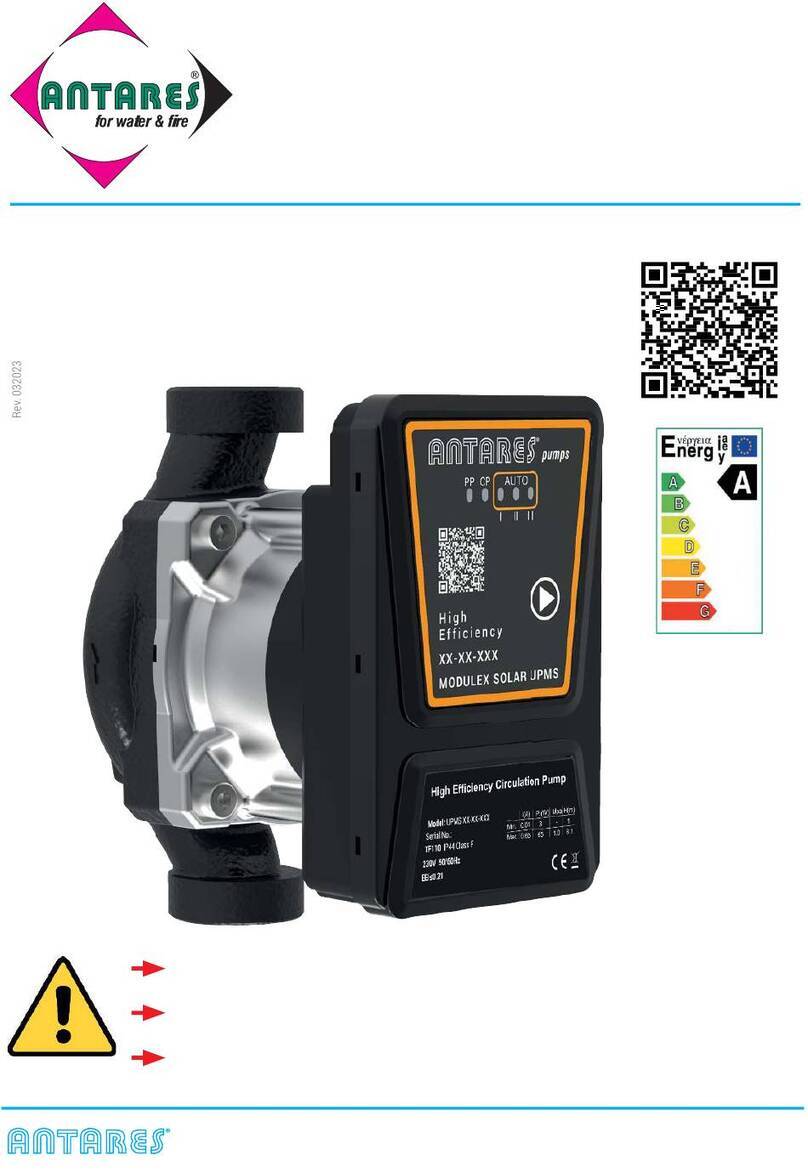
Antares
Antares P.023 Installation and instruction manual
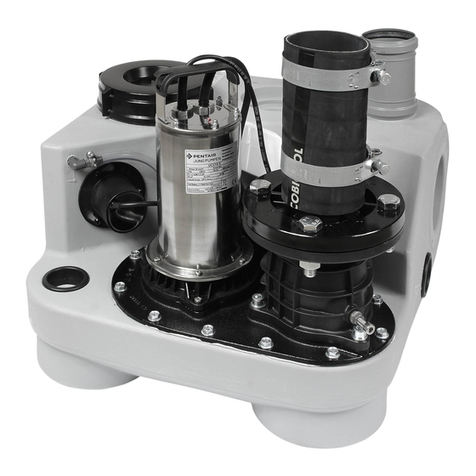
Pentair Jung Pumpen
Pentair Jung Pumpen DRENA-LINE Compli 310 E instruction manual
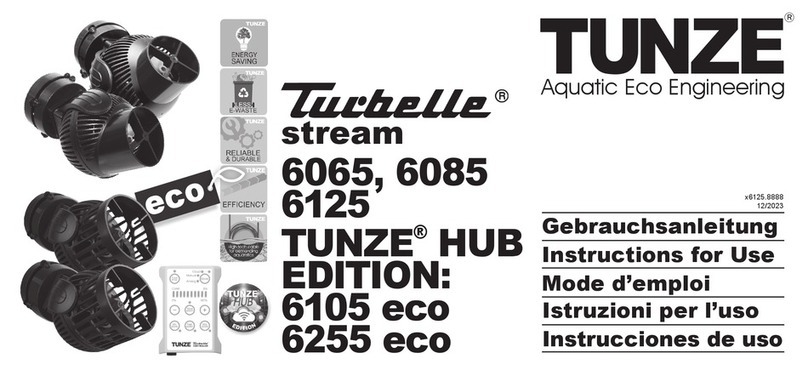
Tunze
Tunze Tucbelle stream 6065 Instructions for use
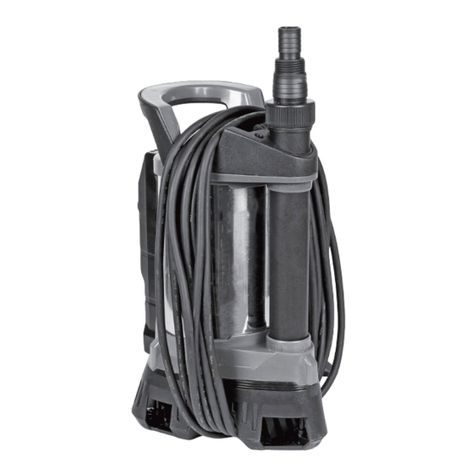
EINHELL
EINHELL GE-DP 7935 N-A ECO Original operating instructions
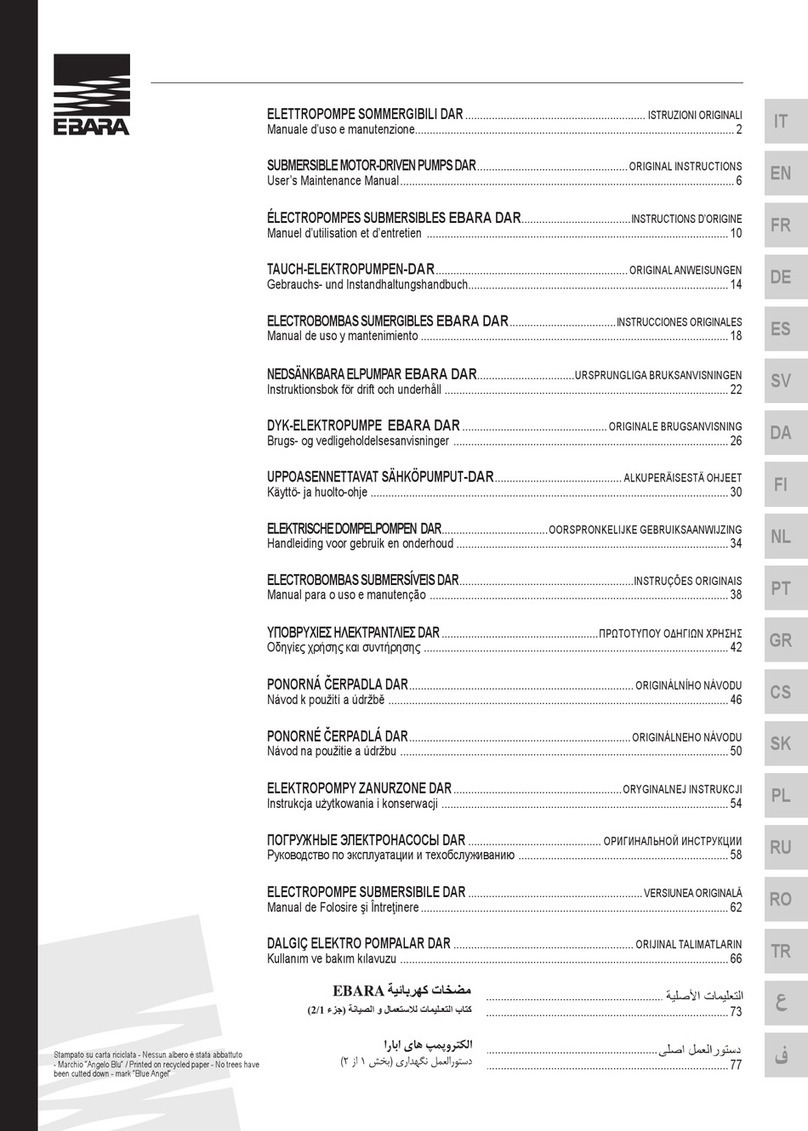
EBARA
EBARA DAR Series Original instructions
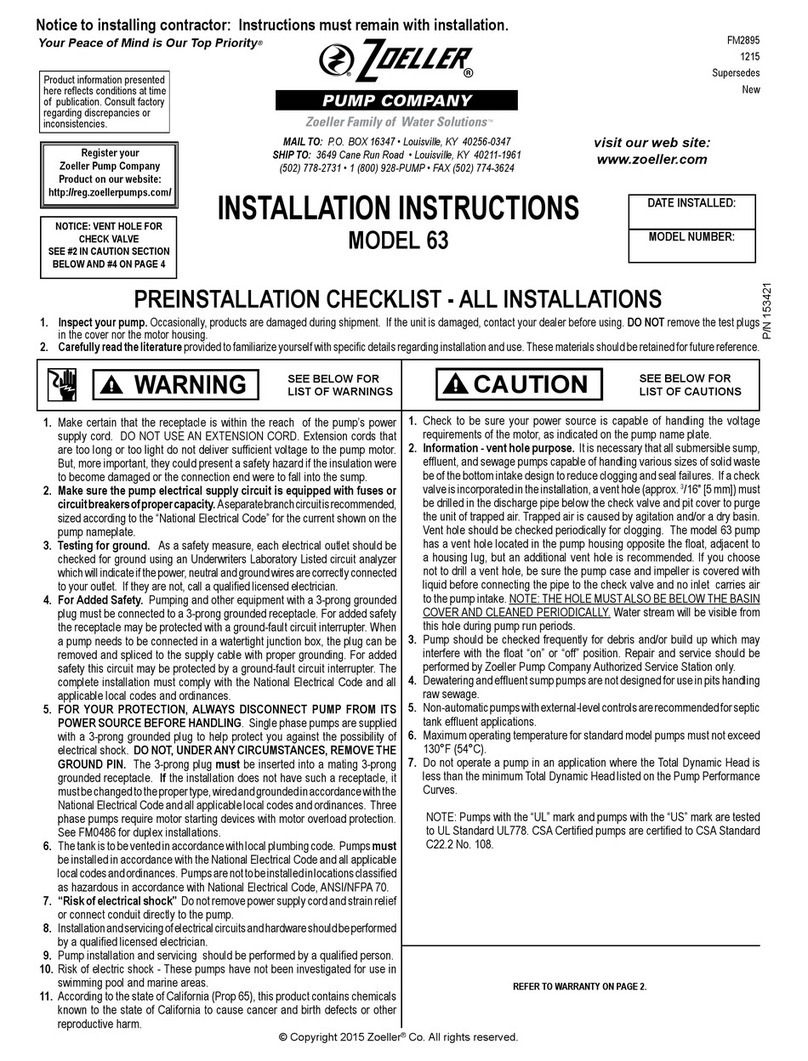
Zoeller
Zoeller 63 installation instructions

Bosch
Bosch 0 986 580 943 installation instructions
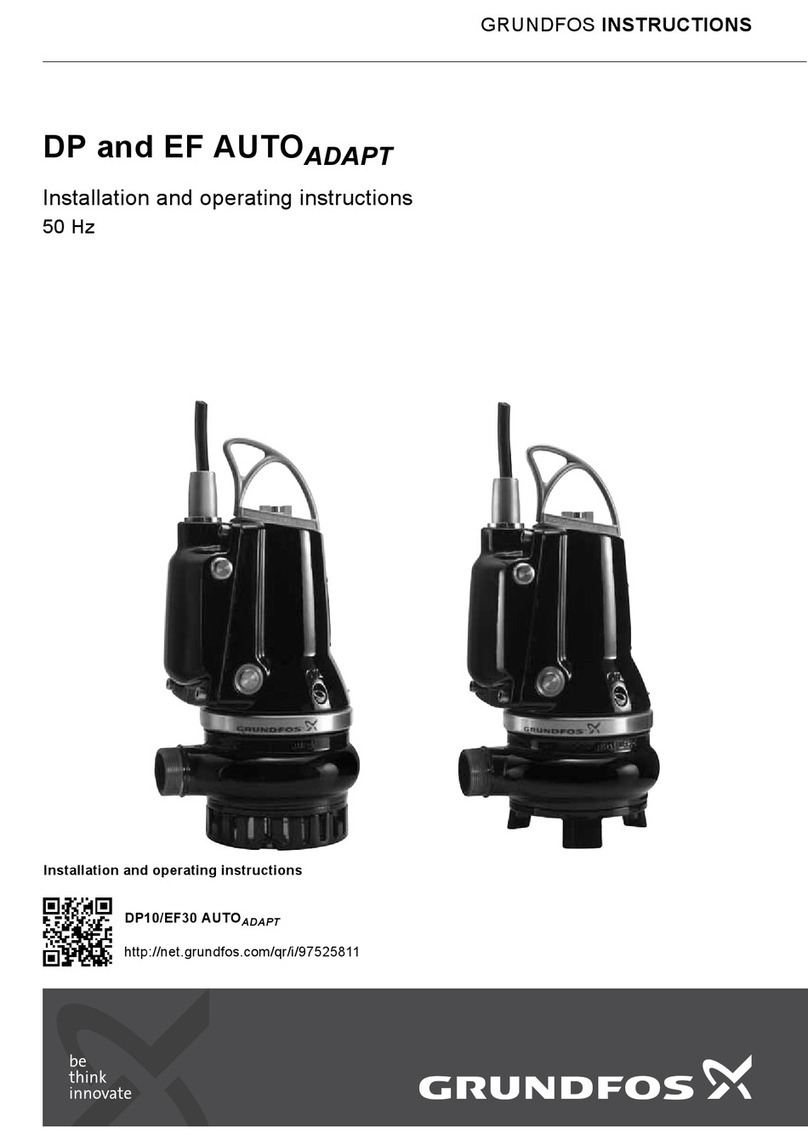
Grundfos
Grundfos DP AUTOADAPT Series Installation and operating instructions
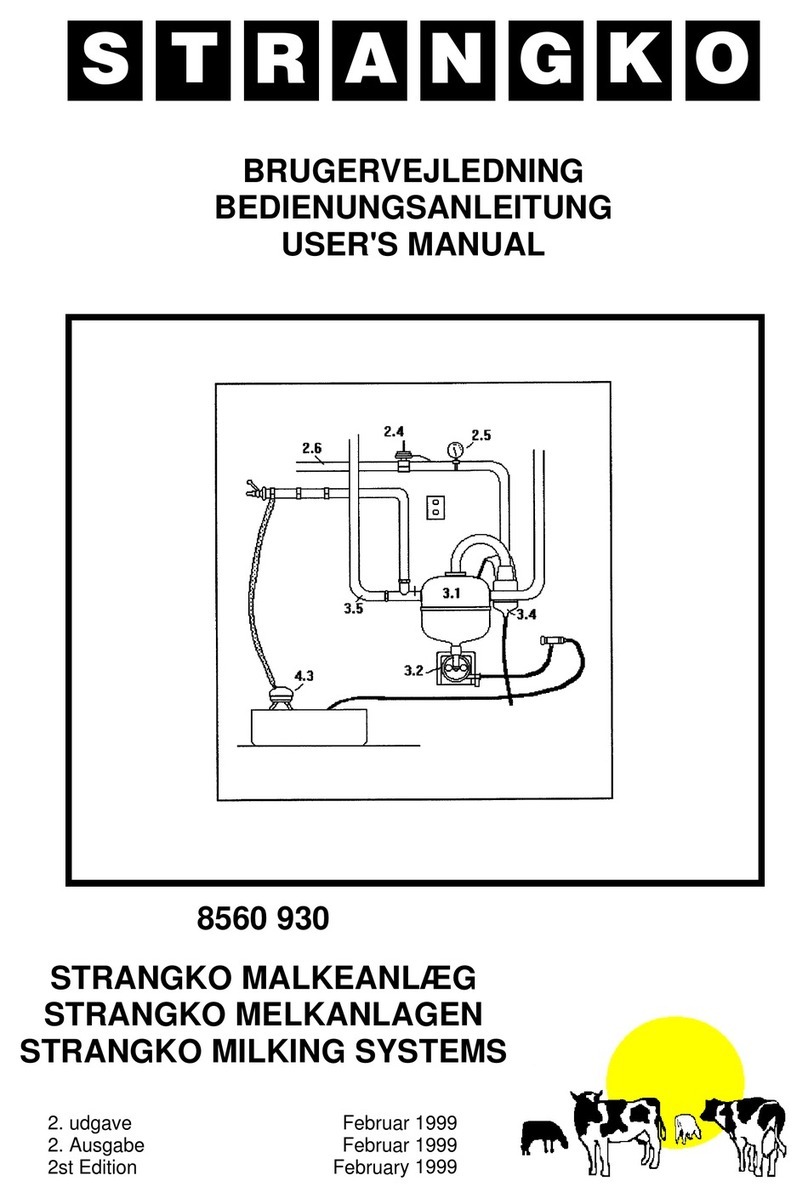
STRANGKO
STRANGKO 8560 930 user manual

GORMAN-RUPP
GORMAN-RUPP 04B3-B Installation, operation, and maintenance manual with parts list

Cole Parmer
Cole Parmer MasterFlex I/P 77420-00 operating manual

Graco
Graco Husky 715 instructions
